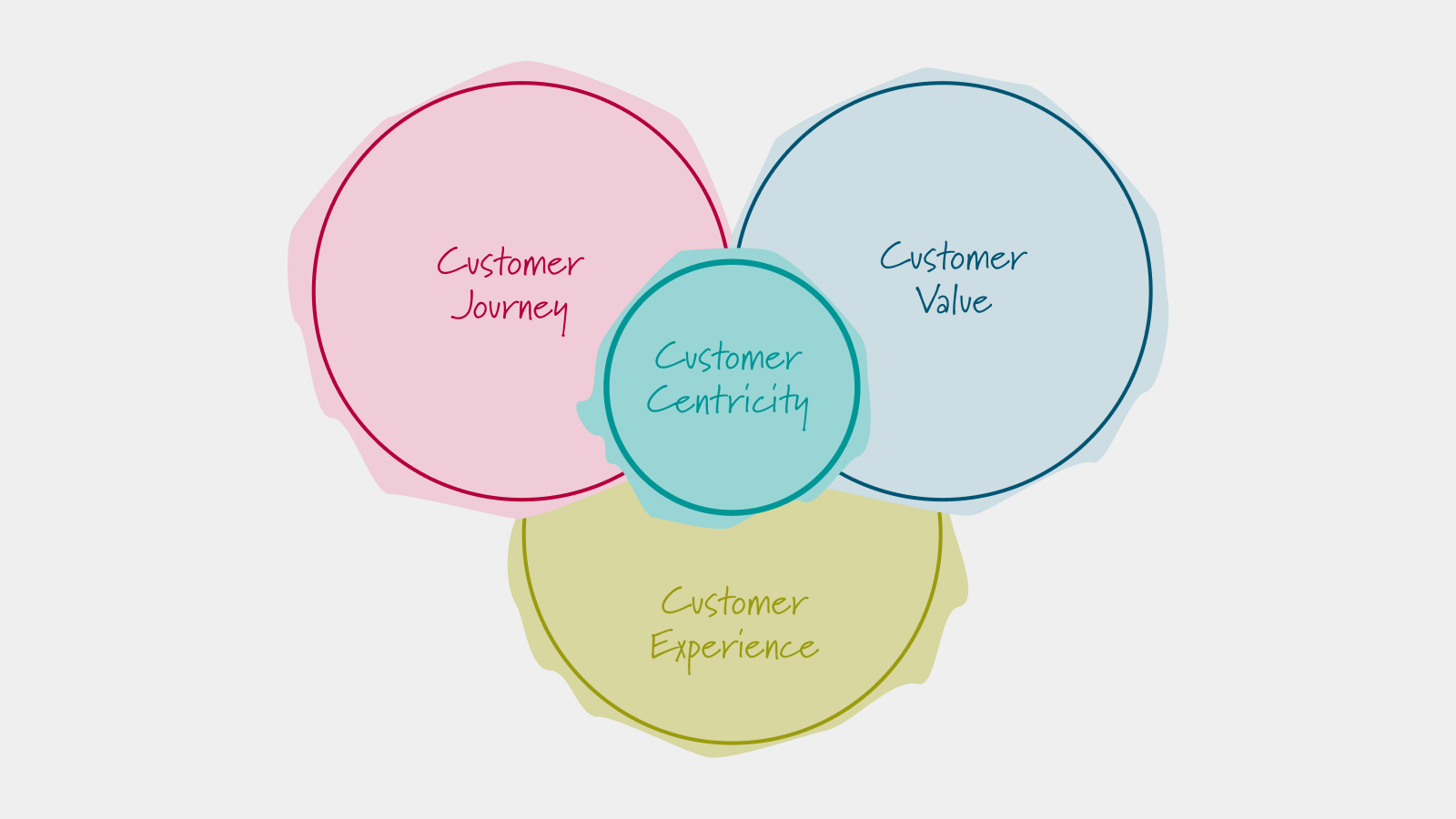
Exploring The Dynamics of Customer Acquisition
Applying the Bass Diffusion Model

Oliver Grasl
19.11.2013
An exploration of the dynamics of customer acquisition using the Bass Diffusion Model
An Introduction Using The Bass Diffusion Model
A key capability every company must have is the capability to acquire new customers. This post takes a bird’s eye view of customer acquisition: Instead of taking a look at the individual steps of the process, it looks at the customer acquisition process from the outside and asks which factors influence its performance. It highlights the questions that must be answered when designing and prototyping a customer acquisition process and provides an interactive business prototype for you to experiment with.
The business prototype is an implementation of the Bass diffusion model, which has been widely influential in marketing and management science (not least because it is capable of explaining the explosive growth rates of online social networks).
Discussing the model in detail will teach us to ask the right questions about which factors influence customer acquisition. Our implementation of the model will give simple answers to these questions at an abstract, generic level—when we design and prototype more concrete and specific customer acquisition processes, the questions themselves will remain the same: it is just the answers that become more differentiated.
Introduction
The following diagram introduces some fundamental concepts:
- the population is the set of people we could possibly reach (through all our marketing activities).
- the target market is the subset of all people to who we are trying to sell our product.
- the potential customers form the subset of the target market that have not bought our product yet.
- the customers form the subset of the total market that have bought our product - so the equation
holds at all times.targetMarket=potentialCustomers + customers

Viewed from the outside, the customer acquisition process “converts” potential customers into customers.

The most straightforward measure of the process performance is the customer acquisition rate, which counts how many new customers we acquire per reporting period. But which factors affect the customer acquisition rate?

The essential activity in marketing is to broadcast a message into the market. Whenever the message reaches somebody in the market, there are three questions we need to consider:
- Who does the message reach?
- How does the message reach this person?
- How does the person react to this message?
To estimate the customer acquisition rate, it is not enough to look at how one individual person acts; we also need to quantify the number of persons we reach and how many messages we need to broadcast in order to do that:
- How many messages are sent to the market, how often are they sent, and at what cost?
- How many persons are reached every time the message is sent?
Let us look at each of these questions in turn.
Who is The Message Reaching?
If we take a look at our diagram of the market, we see that there are only three cases we need to consider, as illustrated in the diagram below:
- The person we reach may not be in our target market. It is difficult to measure this factor directly in practice—at best we can measure how many people we reached and how many of them eventually became customers; nevertheless, it is important to bear in mind because the dilution factor will vary depending on the marketing channel we choose.
- The person we reach is in our target market, but he already is a customer. This may not seem relevant at first when there are still many potential customers in the target market, but it is relevant once the market becomes saturated and there are hardly any potential customers left. We can define the market saturation to be
, the remaining market isrelativeMarketSaturation=customers/targetMarketrelativeRemainingMarket=potentialCustomers/targetMarket = 1 - relativeMarketSaturation - The person we reach is a potential customer. This is the best case, it leads directly to the next question.

How Does The Message Reach This Person?
There are three possible ways in which our message reaches a person in the population, as shown in the diagram below:
- The message reaches the person through some advertising channel—in a detailed model we would investigate each channel separately because each channel has its own characteristics regarding cost and success factors; in our implementation, we will just consider one channel.
- The message reaches the person through a recommendation from somebody he already knows and trusts. This differs from the first case because we must already have customers for this to work—there is a dependency on the current customer base.
- The person finds the message through active search, e.g. via an internet search—this is the idea of inbound marketing. From our bird’s eye perspective, we can just consider this as a variant of the first case—in a detailed model this would be a separate channel with a different cost structure and different success rates.

How Does The Person React to Our Message?
Our model only considers two cases:
- The person buys our product (and becomes a customer).
- The person does not buy our product.
We measure this using a success rate. The success rate will depend on the communication channel: The success rate will be higher when the message reaches the potential customer through word-of-mouth as opposed to reaching him through an advert.
In practice the acquisition process is not quite so straightforward: typically, a potential customer will first become aware of your product; she then may get in touch to learn more about the product; if all goes well, she will then be convinced to buy.
How Often Are Messages Sent to The Market?
In practice, this question is very hard to answer for most companies and even harder to implement: Should you have a continuous marketing campaign (e.g. monthly ads and newsletters) or should you focus more on major events (such as client industry meetings, etc.)? Inexperienced companies may fall into the trap of only ramping up the marketing effort when sales start dropping below an acceptable measure (and by then it may be too late). Even companies that do plan to market on a regular basis often find it difficult to implement this.
To keep our prototype simple we assume that marketing messages are broadcast on a regular, monthly basis.
How Many People Does the Message Reach?
Our initial model only considers the cost of advertising and neglects costs for the marketing staff and the cost incurred in creating the adverts themselves. We will assume that the number of people we reach depends linearly on the size of the marketing budget—this is reasonable for magazines, TV and online adverts.
Summary
Viewed from a bird’s eye perspective, the customer acquisition rate depends on the following six factors:
- the size of the remaining market (i.e. the proportion of potential customers to the target market), which determines how many of the people we reach are potential customers (as opposed to customers).
- the company’s advertising budget, which determines the number of people the company reaches each time period.
- the advertising success rate, which determines how many of the potential customers we reach are converted into customers.
- on the current number of customers, which influences how many potential customers hear about our product through word of mouth.
- the word-of-mouth contact rate, i.e. on the number of people each of our customers speaks to about our product
- on the word of mouth success rate, which usually is higher than the advertising success rate because people put more trust in the opinions of their friends and colleagues than into advertising messages.
The diagram below illustrates these factors.

Even though there are only a few factors, the model produces a wide variety of different behaviors depending on the concrete settings. These behaviors replicate many of the actual phenomena we see in customer acquisition. You can test the Bass diffusion model for yourself in the interactive implementation I have provided below— you can learn more about the Bass Diffusion Model in our Business Prototyping Methodology Course, in particular in the chapter on Causal Loop Diagramming.
Meanwhile, see if you can answer the following questions:
- What happens if you only consider advertising and neglect the word-of-mouth effect?
- What happens if rely solely on the word-of-mouth effect? If you start with 0 customers? If you start with 10 customers?
- Can you achieve an S-shaped product life cycle curve? What does the graph of the customer acquisition rate remind you of in this case?
You can also see this graph at https://prototypes.transentis.com/customeracquisition.
Workshops
Resources
All Rights Reserved.





